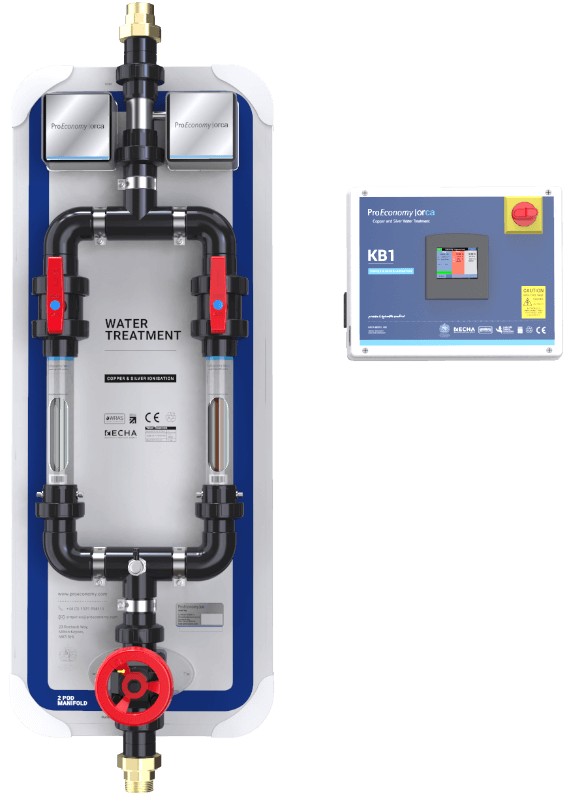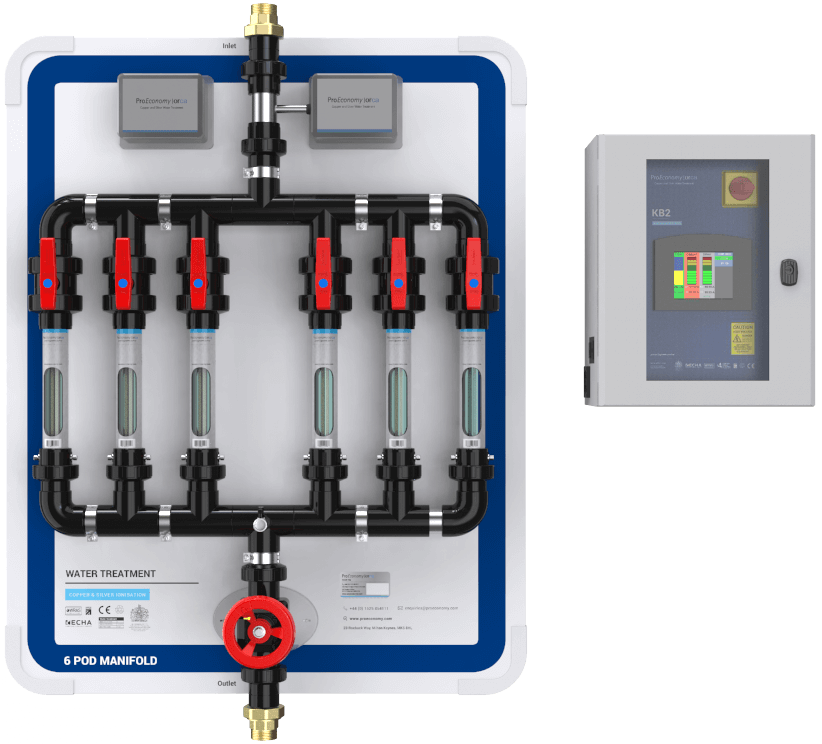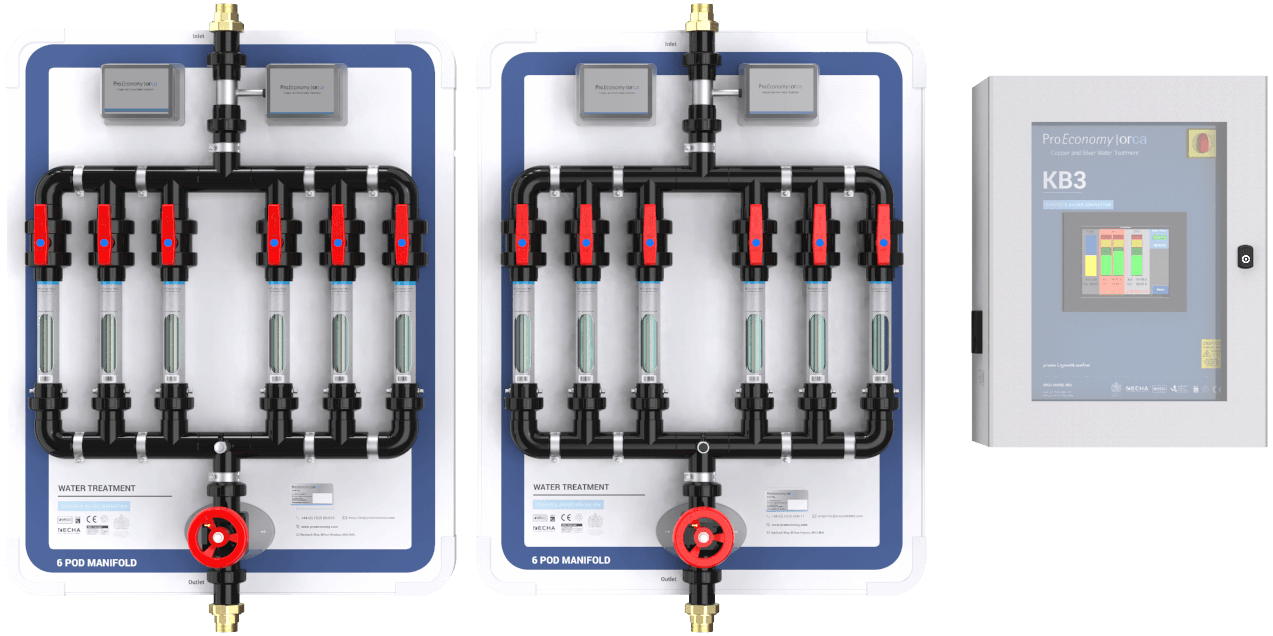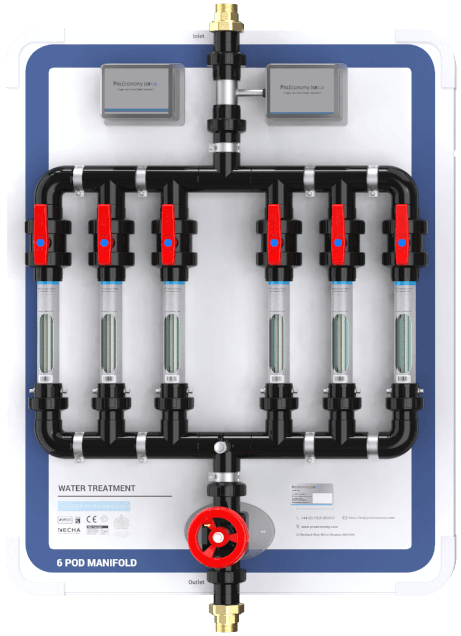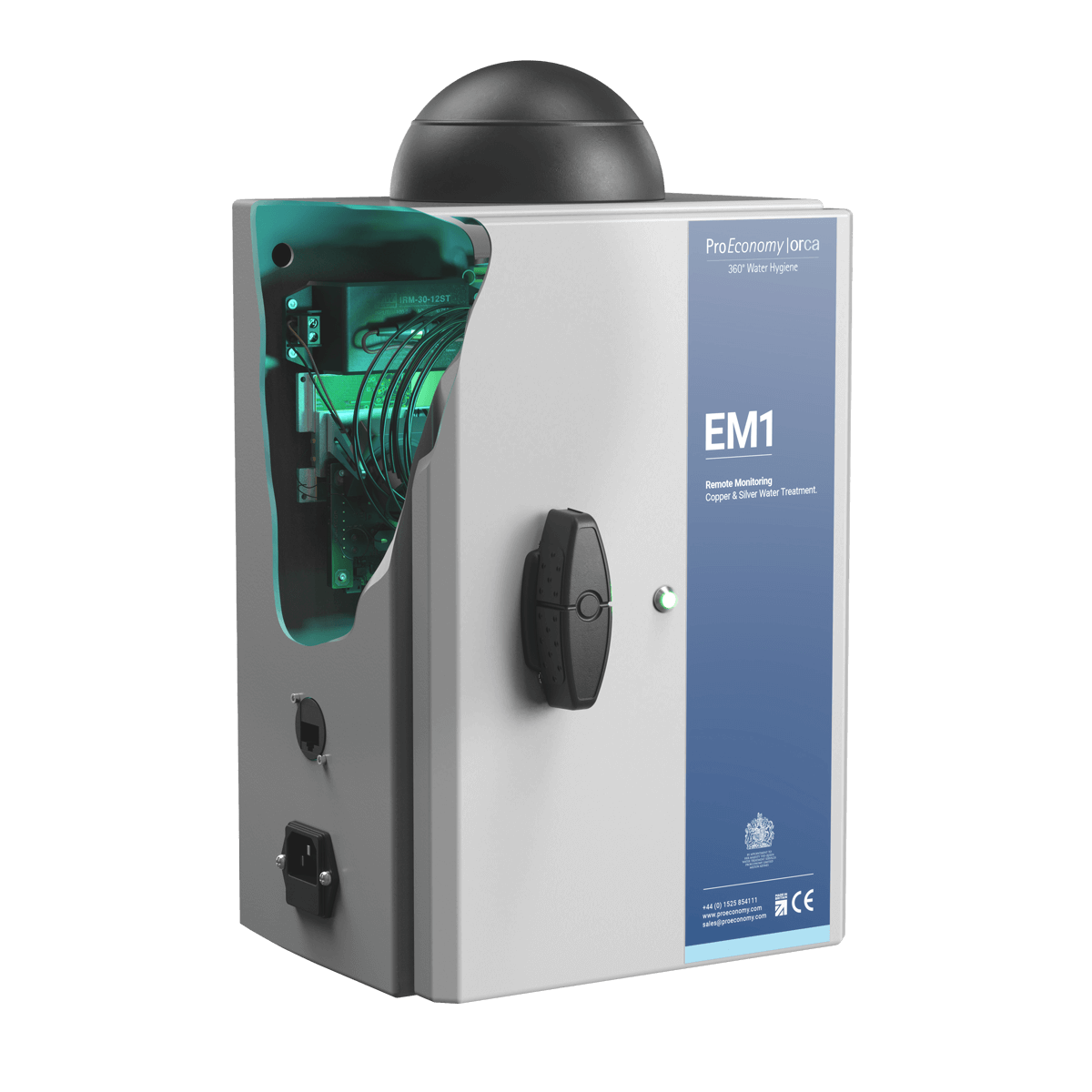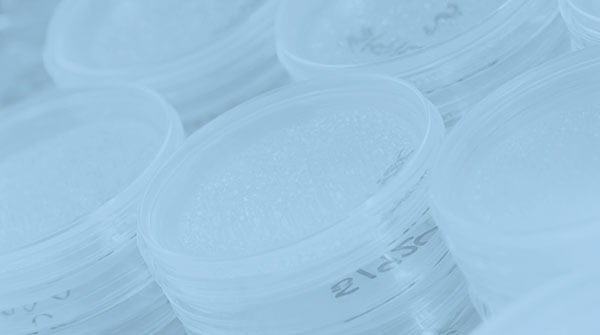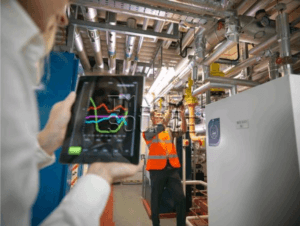Legionella Pneumophila
Legionella pneumophila is a disease-causing microorganism, which is ubiquitous in water systems and can infect people, being particularly dangerous for hospital patients that have a compromised immune system. This microorganism is well known for causing Legionellosis (Legionnaires’ disease and Pontiac fever). L. pneumophila and other species of the genus Legionella thrives in temperatures between 20 and 45°C and multiplies rapidly in untreated or ineffectively treated water systems.
Legionella makes its way into a human system when it is caught by inhaling and aspiration of particles of aerosol emitted by showers and taps. These microorganisms have been responsible for deaths and, therefore, we need to control Legionella, especially in hospitals and care homes water systems.
In the UK Legionnaires’ disease requires to be reported to the Health Protection Agency (HPA). The total confirmed cases of Legionnaires’ disease in England and Wales reported to the HPA from 1980 to 2009 was 6750, of which 837 were fatal. There are also many cases that are not reported. Cases of deaths and resulting legal cases have been reported in the press from time to time. L. pneumophila was responsible for four Legionnaires’ disease deaths in Scotland during an outbreak in 2012, when 92 cases were registered (BBC News website). More recently we have heard of a Legionella outbreak in the Bronx, New York, and the most recent outbreak in Flint, MI, USA, has so far resulted in 10 deaths from Legionnaires’ disease and 87 infected people.
The most commonly used measures for Legionella control are intermittent heat and flush, temperature control methods, chlorine dioxide and copper-silver ionisation.
Temperature Control Methods
In the UK, the HTM04-01 says that temperature control methods are preferred for Legionella treatment. Therefore, it has been the primary method applied for the control of Legionella in water distribution systems in the UK. Temperature control methods entails obtaining 55 ⁰C and above, after running any hot water tap for 1 minute, and 20 ⁰C and below, after running any cold water tap for 2 minutes (HTM04-01, 2006). Although there was insufficient evidence that Legionella was controlled at these temperatures and water analyses results confirm lack of efficacy. For example, only 13% of the results of tests carried out by the UK Building Services Research and Information Association (BSRIA), in 1996, using temperature control were free of Legionella.
Are Temperature Control Methods Ineffective?
I have come across a few studies that found temperature control methods ineffective (Bédard et al., 2015). For example, an article in the American Journal of Infection Control (Kruse et al, 2016, in Press) showed that: “Effectiveness of thermal disinfection to remove Legionella spp. colonization from a hot water system is limited and may be insufficient if concentrations are high.” They showed that Legionella was found at medium to high levels in 33% of 4,482 water samples from 718 different water supply systems analyzed in Germany. The most common species was L. pneumophila (94%).
Controlling Legionella by temperature may also not always be possible or practical and in recognition of this, the ACoP (L8) advises that alternative techniques instead of temperature control can be used as long as proliferation of Legionella is prevented. The HTM04-01 document also recommends the use of alternative techniques, but only together with and not instead of temperature control. I have given evidence here that temperature control of Legionella is not always effective and should not be recommended as the preferred method, because many premises managers may see preferred as ‘must be used’ and end up opting for a control measure that is known to be unreliable.
Copper and Silver Ionisation
On the other hand, copper and silver ionisation for Legionella control is one of the current techniques that have been shown to be effective for Legionella control (Landeen et al., 1989; Lin et al., 2011; Lin et al., 1996, BSRIA TN6/96). CSI works at both hot and cold water temperature (Liu et al, 1994; Liu et al., 1998; Stout et al., 1998; Kusnetsov et al., 2001; Stout and Yu, 2003 and Chen et al. 2008).
Studies of hot water systems in hospitals in the USA suggested that copper and silver ionisation eliminated L. pneumophila contamination in systems with relatively low water volume (<200 L) and without hot water storage tanks (Liu et al., 1994; Coville et al., 1993). In addition, by allowing the system to operate at lower temperatures, reduction in energy consumption associated with heating water can significantly lower carbon footprint. The installation of a copper and silver ionisation system also minimises the use of thermostatic mixing valves due to the lower temperatures, thus eliminating the need for mixing valve maintenance regimes and corresponding costs.
ProEconomy’s Copper and Silver Ionisation system, The Orca, is successfully controlling Legionella in over 200 sites worldwide. Contact us for more information.
References
Bédard, E.; Fey, S.; Charron, D.; Lalancette, C.; Cantin, P.; Dolce, P.; Laferriere, C.; Déziel, E.; Prévost, M. (2015). Temperature diagnostic to identify high risk areas and optimize Legionella pneumophila surveillance in hot water distribution systems. Water Research 71, 244-256.
Building Services Research and Information Services (1996) Application Guide AG 2/93. Water treatment for building services systems. Building Services Research and Information Services (BSRIA) Technical Notes TN6/96 1996. Ionisation water treatment for hot and cold water services.
Chen, Y.S.; Lin, Y.E.; Liu, Y.C.; Huang, W.K.; Shih, H.Y.; Wann, S.R.; Lee, S.S.; Tsai, H.C.; Li, C.H.; Chao, H.L.; Ke, C.M.; Lu, H.H.; Chang, C.L. (2008). Efficacy of point-of-entry copper-silver ionisation system in eradicating Legionella pneumophila in a tropical tertiary care hospital: implications for both hospitals contaminated with Legionella in both hot and cold water. Journal of Hospital Infection 68:152-158.
Colville, A.; Crowley, J.; Dearden, D.; Slack, R.C.B.; Lee, J.V. (1993). Outbreak of Legionnaires’ disease at University Hospital, Nottingham: epidemiology, microbiology and control. Epidemiol Infect 110:105-16.
Kruse, E.-B; Wehner, A.; Wisplinghoff, H. (2016). Prevalence and distribution of Legionella spp in potable water systems in Germany, risk factors associated with contamination, and effectiveness of thermal disinfection. American J of Infection Control. In Press.
Kusnetsov, J.; Iivanainen, E.; Elomaa, N.; Zacheus, O.; Martikainen, P.J. (2001). Copper and silver ions more effective against Legionella then against Mycobacteria in a hospital warm water system. Wat. Res. 35(17):4217-4225
Landeen, L.K.; Yahya, M.T.; Gerba, C.R. (1989) Efficacy of copper and silver ions and reduced levels of free chlorine in inactivation of Legionella pneumophila. Appl Environ Microbiol 55:3045-50.
Lin, Y.; Stout, J.E.; Yu, V.L. (2011) Controlling Legionella in Hospital Drinking Water: An Evidence-Based Review of Disinfection Methods. Infection Control and Hospital Epidemiology 32:166-173.
Lin, Y.S.E.; Vidic, R.D.; Stout, J.E.;Yu, V.L. (1996) Individual and combined effects of copper and silver ions on inactivation of Legionella pneumophila. Wat. Res. 30:1905-1913.
Liu, Z.; Stout, J.E.; Tedesco, L.; Boldin, M.; Hwang, C.; Divert, W.F.; et al. (1994). Controlled evaluation of copper-silver ionization in eradiqating LegionelIa pneumophila from a hospital water distribution system. J Infect Dis 169:919-22.
Liu, Z.; Stout, J.E.; Boldin, M.; Rugh, J.; Diven, W.F.; Yu, V.L. (1998). Intermittent use of copper-silver ionisation for Legionella control in water distribution systems: A potential option in buildings housing individuals at low risk of infection. Clinical Infectious Diseases 26:138-140.
Stout J.E., Y.E. Lin, A.M. Goetz, and R.R. Muder. (1998). Controlling Legionella in hospital water systems: Experience with the superheat-and-flush method and copper silver ionization. Infection control and Hospital Epidemiology 19(12):911-914.
Stout J.E.; Yu, V.L. (2003). Experiences of the first 16 hospitals using copper silver ionisation for Legionella control: Implications for the valuation of other disinfection modalities. Infection Control and Hospital Epidemiology 24(8):563-568.
